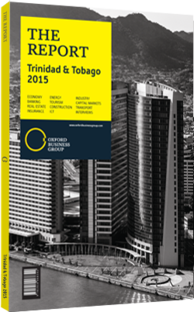By many metrics, Trinidad and Tobago's economy fares better than those of its neighbours
Although in many ways similar to other Caribbean nations, Trinidad and Tobago has a number of characteristics that clearly set it apart from its neighbours. Within the region, T&T shares membership in a number of both regional and international organisations.
T&T was one of the four founding members of the regional CARICOM bloc, which has since expanded to include a total of 15 member states, as well as five associate members. This organisation aims to help coordinate the interests of its members in order to provide them with greater leverage in negotiating international agreements and also to facilitate better communication between members.
Beyond the regional agreement, T&T is also a member of the Commonwealth of Nations, a 53-member body that is composed of countries that share an historical connection with the UK. Of the full members of CARICOM, 13 are also participants in the Commonwealth. Within the organisation, T&T is classified as a small state, along with the other Caribbean members.
Small States
Small states are identified as those countries that have fewer than 1.5m inhabitants, or in some cases, those that may have a higher population but which share many of the characteristics of a small state. According to the Commonwealth, small states tend to face many challenges, including dependence on a narrow range of exports and high transportation costs due to insularity and remoteness. Small states tend to be dependent on strategic imports such as food and fuel and to be susceptible to natural disasters and environmental change. Some are characterised by a decline in global trade and investment while others have a lack of readily available information for investors and trading partners. Combined, these factors limit capacity to harness growth opportunities.
Like its neighbours, many of these characteristics hold true for T&T. The country relies heavily on the energy sector for state revenues and exports, as well as on imports for many manufacturing and agricultural products. As a twin-island state, international transport is limited to sea and air, while just 51% of roadways are paved (see Transport chapter). In terms of vulnerability to natural disasters, the T&T Office of Disaster Preparedness and Management identified a number of key risk factors including changing rainfall patterns, a major fault line running through Trinidad, and poor regulatory oversight and enforcement of building standards. Finally, although T&T has been successful at sustaining trade volumes, providing accurate information has continued to be a challenge, with the Central Statistics Office frequently facing difficulties.
A Cut Above
Despite its similarities with its neighbours, T&T differences are perhaps more significant. In geographical terms, T&T is relatively big. Trinidad (with an area of around 5000 sq km) is the fifth-largest island in the Caribbean (after Cuba, Hispaniola, Jamaica and Puerto Rico) and the sixth largest in the West Indies (which includes Andros, the largest island of the Bahamas). The population of T&T, at 1.34m, is vastly larger than those of all other CARICOM members save Jamaica (2.8m) and Haiti (10.46m).
Even relative to the CARICOM countries with much larger populations, T&T stands out for the absolute size of its economy. The IMF estimates that T&T’s GDP amounted to nearly $30bn in 2014. This is about the same as the combined GDP of the next three largest CARICOM economies – Jamaica ($13.9bn), Haiti ($8.9bn) and the Bahamas ($8.6bn). With a GDP per capita of $21,310 in 2014, T&T had the second-highest value in the region after the Bahamas, and comparable to European countries such as Greece or Portugal.
In terms of government spending, T&T is also in a better position than many of its neighbours. For example, estimates indicate that government net borrowing in Barbados, St Vincent and the Grenadines, and Grenada in 2014 amounted to 6-9% of GDP in 2014, with T&T expected to post a modest 2.3% deficit. In terms of gross debt to GDP, nine of the countries served by the Caribbean Development Bank had ratios above 75%, while T&T’s debt-to-GDP ratio is at a manageable 42%.
You have reached the limit of premium articles you can view for free.
Choose from the options below to purchase print or digital editions of our Reports. You can also purchase a website subscription giving you unlimited access to all of our Reports online for 12 months.
If you have already purchased this Report or have a website subscription, please login to continue.

